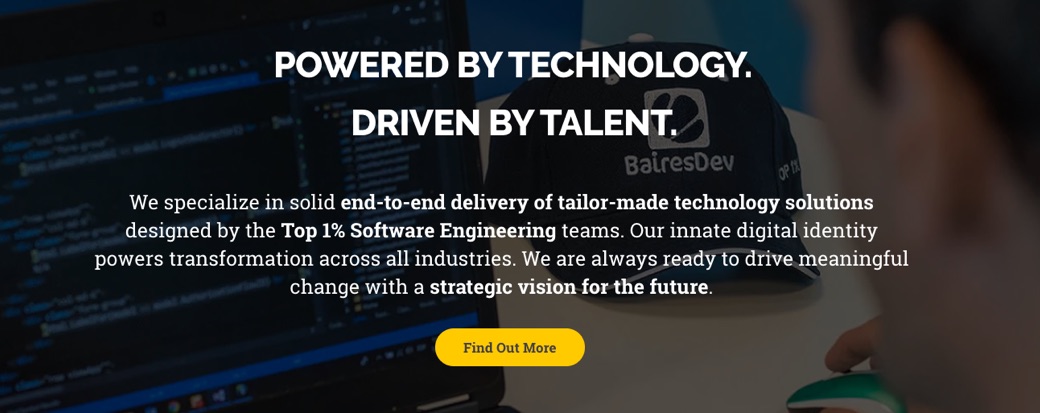
There’s a strange condition that affects people the second they slip on their marketing hat. Their words become complex. They spit out sentences in odd, stilted fragments. Original thoughts get replaced with clichés, and ideas are drained of emotion.
In other words, creating marketing messages robs people of their ability to speak like human beings.
It’s hard to say what the exact cause of this condition is, but there are several factors that could contribute to it, including:
- A compulsion to describe things in precise detail
- A belief that big words make things sound more important or valuable
- A fear of saying something that might be perceived as strange or unprofessional
- A desire to simplify ideas (to a fault)
- A habit of copying the style and content of competitors or giant corporate brands
Most of these issues are rooted in a desire to communicate clear, accurate ideas. But in reality, they result in marketing that’s hard to understand, easy to ignore, and impossible to remember.
These messages don’t use the same style of language that we consume in any other aspect of our lives. And they certainly don’t sound like they’re coming from a real person.
They tend to come across as either dull, dictionary-esque descriptions, or vague platitudes.
And because the content is dense, choppy, and dry, it triggers our brains to shut off.
It’s the exact opposite of what our messaging needs to do.
The goal of your messaging is to communicate your brand’s unique value in a memorable way. It needs to make an emotional connection. It needs to build trust.
That’s what people do in real life. They convey ideas in simple terms. They tell stories. They express emotion.
These are the elements that are often missing during those few precious seconds when you get your customer’s attention. Rather than messaging that talks with people it markets at them.
Yes, it’s important to make your story clear and succinct, but do it with some emotion. Tease at the ways your customer’s life will be better because of your product or service. Speak in language that you’d use to tell a friend or colleague what you do.
Of course some industries are harder to navigate than others. Technical B2B products and services are often complex and tricky to summarize.
But imagine for a second that you own a software company. You have 10 seconds to explain to someone you just met why their business would improve as a result of using your services.
Could you imagine phrases like these coming out of your mouth?




Seriously, pause for a second and say this out loud: “Our innate digital identity powers transformation across all industries.”
What reaction would you expect if you said that to someone? Do you think they’d even be able to process it?
Now imagine you’re the one listening to those messages.
How do they make you feel? Do you feel anything?
Do you understand not only what the companies provide, but how your business will improve by using them?
Could you explain to someone else why one is better than the other?
Do you think you’d remember any of them a day from now? Or even 5 minutes from now?
And while technical services are some of the biggest offenders of jargon-rich marketing speak, you can spot emotionless marketing descriptions in other industries too:

If you were trying to get a friend excited about a new computer, would you say, “It’s like this other computer but, you know, better”?
Maybe instead you could speak to what someone can actually do with the computer.
And what if you wanted someone to try an at-home fitness product? Is this all you’d say?

Is there anything more engaging you could imagine saying about the experience of using this product? Could you talk about how it supports that person’s health and fitness aspirations?
You can’t expect people to infer why they should be interested in a product or what role it might serve in their life. It’s your job to do that mental heavy lifting for them.
And if you’re thinking, “Well that’s just how everyone speaks in our industry. It’s expected.”
That’s all the more reason why you should do something different.
Again, the idea is to convey your unique value in a memorable way. If you resign to speaking like everyone else, what are the odds of making a distinct impression?
With all that said, what are some things that can make messaging more compelling, memorable, and human?
Tips To Make Your Messaging More Human
The first step in effectively conveying your brand’s unique value is to get clear on your positioning.
You have to know what your strengths and points of difference are. And you need to understand where that places your brand relative to competitive solutions.
Once you’ve done that you need to define some core strategic elements:
- The benefits you provide customers based on the outcomes they’re seeking
- Your brand’s Tone of Voice
- Your brand’s Personality or Archetype
And then to help execute messages you can develop additional brand guidelines and tactics:
- Create a list of words that you use and don’t use (i.e. it might be time to ban “Innovative”)
- Try expressing ideas in actual sentences rather than 2-3 word snippets
- Try describing your product or service using words with 3 syllables or less. Then try with 2 syllables or less.
- Make sure you can identify the core emotion that’s conveyed by your message
- Practice reading your messaging out loud to another person
These ideas won’t magically create effective messaging, but they can help shake old marketing-speak habits and get you thinking in new directions.
Remember, your messages aren’t descriptions to fill a page. They’re your first line of communication with customers, all of whom are actual people. Talk to them like real human beings and there’s a much better chance they’ll understand and remember how your brand fits into their lives.

Get Help Creating More Effective Messaging
If you’re ready to improve your marketing and messages and connect with more customers, reach out for a free consultation. We’ll help you transform your best business thinking into an actionable, shareable, growth-oriented guide. Click below to learn more about the Brand Guidebook process.

